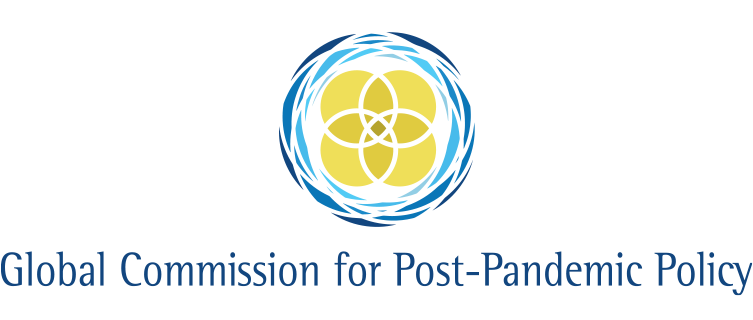Unvaccinated Africa and the perpetual pandemic
ARGUMENT
By Bill Emmott, co-director GCPPP, February 17th 2022
Looking at this map, from the brilliant Our World In Data service that grew out of the Oxford Martin School, it is pretty obvious from where the next variants of the virus that has dominated our lives for the past two years are going to emerge. The Omicron variant, which alarmed us all in November, most likely developed over a long period in an immunocompromised patient, perhaps an AIDS sufferer, somewhere in Southern Africa. At least that is what my colleague Dylan Barry found that scientists think is the most persuasive explanation. It is certainly not an evolution of the previous Delta variant and so its less severe health consequences cannot be taken as evidence that Covid-19 is getting milder as time goes on. Somewhere in sub-Saharan Africa the next variant may well be lurking, and there is no way of knowing whether it will be milder or more severe, more evasive of vaccine protections or less.
There is not much we can do about this, directly. The relaxation, in some cases total removal, of legal and social restrictions led by Europe and North America is not an unreasonable response to the changing calculus of risk as high levels of their populations are now triple vaccinated and as better treatments emerge. What should be added is some serious long-term planning to mitigate the impact of future variants and indeed other pathogens: investment in early-warning/detection systems; investment and regulations to greatly improve ventilation and air-filtration systems in indoor spaces of all kinds; further investment in vaccine development and where necessary manufacturing capacity; public education to encourage the wearing of masks whenever people develop symptoms of any infectious or contagious disease, including colds, flu and of course Covid-19. The Japanese have been doing this ever since the Spanish flu a century ago, and it has stood them in excellent stead during this pandemic, along with other measures.
What stands glaringly out from that map is, however, that there remains a huge need for what we can do, indirectly. Until Africa has attained adequate levels of vaccination, our description in our assessment, The Global Condition, of this needing to be considered as a “perpetual pandemic” will remain soberingly valid. There has been much talk about donating vaccines to poor countries, many ‘vaccine summits’, and much fretting about competitive ‘vaccine diplomacy’ between China, the US and others, which if only it would actually happen might result in a dramatic increase in supplies to poor countries and a dramatic acceleration in their vaccination programmes. But even though there have been donations of funds and of vaccines, the overall result has been a dismal failure. After all that talk, progress remains snail-like.
The numbers are simple. To vaccinate 80% of Africa’s population with a two-dose regimen would require about 2.2 billion doses. As of February 12th a total of 367.2 million had been administered in Africa (these numbers use Our World in Data’s definition of Africa, which takes in North Africa — where vaccination rates are quite high in most countries — and reaches to the Red Sea). That leaves about 1.8 billion doses to go. The current daily dosing rate in Africa is just 1.06 million. So to get to 80% at that rate will take another 1,725 days, which is nearly five years. Even if you think, perhaps reasonably, that 80% is an unrealistic target, the point is clear: Africa is way, way behind virtually everyone else. Even getting to 40-50% is unfeasible at current rates before 2024, at best.
Gauging the pace of the rest of the world’s vaccination programmes has been complicated by the booster jabs. So far, 10.3 billion jabs have been administered, of which 1.2 billion have been boosters. More than three times as many boosters have been administered than the total number of jabs so far in the whole of Africa. Be that as it may, virtually all the rest of the world will be at something akin to full vaccinated protection — leaving aside vaccine resistance — within the next 2-3 months. India, the major producer of the cheapest effective vaccine, that of Oxford/AstraZeneca, shows what can be done, in terms both of vaccinations and production: in India, with a population similar to that of the whole of Africa, now 54% have been fully vaccinated and a further 15% are partly vaccinated.
In Africa, as this further chart from Our World in Data shows, a handful of nations are at advanced-country or Indian levels of protection but the vast majority are nowhere near. There are many reasons for this, including politics, state fragility and competing priorities in African countries themselves. But the outside world could certainly do a lot more to help change this, as a way to lessen the likelihood of the pandemic being perpetual. Gordon Brown has kept a relatively low profile since his fairly brief period as Britain’s prime minister in 2007-10, but his work on vaccine equity and the huge African gap has been among the best.
The final conclusion is that as governments draw up ‘preparedness’ plans for the prospect of future pandemics, a long-term strategy for building vaccine capacity and, crucially, the infrastructure for vaccine delivery in Africa should be a vital chapter. Two things we have learnt from this pandemic are that international collaboration in the common interest is now less reliable or capable than ever, and that it is very hard to get vaccination programmes going in Africa from a standing start. Yet if we don’t, we can at least double the length of time we expect this and future pandemics to carry on disrupting our lives.
Photo by Doug Linstedt on Unsplash
GCPPP Newsletter
We now publish a weekly newsletter to inform friends and supporters of the Global Commission’s progress and to provide updates when new content is published. Please sign up here:




 Fateme Alaie, Unsplash
Fateme Alaie, Unsplash



